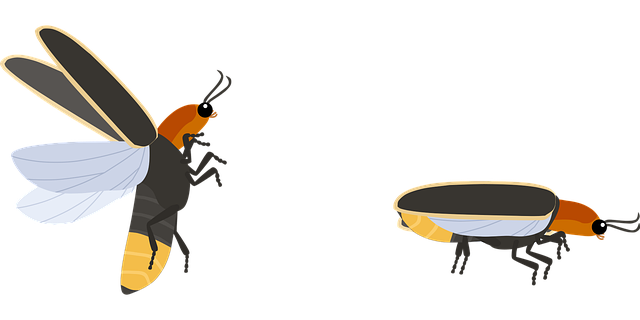Carpet beetles are attracted to various substances and can cause unwanted infestations. To prevent and treat these issues, it's crucial to maintain a clean environment through regular cleaning, prompt debris removal, and airtight storage. Early identification via inspections and professional treatments like HEPA vacuuming, pheromone traps, and natural deterrents is key for effective carpet beetle infestation treatment. Natural remedies include essential oils and insect growth regulators, while proactive measures like sealing entry points and improving ventilation significantly reduce the risk of infestations.
Carpet beetles can quickly turn into a home owner’s nightmare, causing significant damage to fabrics and upholstery. Understanding how to reduce carpet beetle attractants is key in preventing and treating infestations effectively. This comprehensive guide explores expert advice on identifying early signs of an infestation, implementing professional strategies, and employing natural repellents for a beetle-free home. Learn about the best cleaning techniques and safe eradication methods to tackle this common issue head-on.
Understanding Carpet Beetle Attractants: Common Sources and Behaviors
Carpet beetles are attracted to a variety of substances, often found in homes and commercial spaces, which can lead to an unwanted infestation. Understanding these attractants is the first step in effective carpet beetle infestation treatment. Common sources include natural fibers like wool and silk, as well as certain types of food and plant matter. These insects are also drawn to perspiration stains and urine left behind by pets. Their behavior often involves feeding on organic materials, with larvae burrowing into fabrics, carpets, and furniture. The adult beetles can travel through cracks and crevices, quickly spreading the infestation across rooms or buildings.
To minimize attractants, regular cleaning and maintenance are essential. This includes vacuuming floors and carpets to remove debris and potential food sources. Treating pet accidents promptly and using enzyme-based cleaners to break down organic stains can help deter carpet beetles. In addition, storing items like clothing, blankets, and furniture in airtight containers made of plastic or glass can create a physical barrier against these pests. Regular inspection and professional carpet beetle infestation treatment are crucial for identifying and eliminating any existing infestations early on.
Professional Strategies for Identifying Infestation Early
Early identification is key in effective carpet beetle infestation treatment. Professionals employ strategic methods to detect these infestations before they escalate. One common approach involves inspecting for telltale signs like adult beetles, larvae, or webbing in hidden areas under furniture, along baseboards, and inside floor vents. Regular vacuuming with a high-efficiency particulate air (HEPA) filter can also help, as it traps and removes tiny beetle parts and eggs that may be present.
Additionally, professionals may use pheromone traps to monitor for adult beetles, which can indicate an active infestation. By understanding these professional strategies, homeowners can stay proactive and take swift action if any signs are detected, minimizing damage and ensuring a successful carpet beetle infestation treatment.
Effective Cleaning and Prevention Techniques to Deter Carpet Beetles
Carpet beetles are attracted to various elements, from natural fibers to specific types of dust. Effective cleaning and prevention techniques are crucial in deterring carpet beetles and managing an infestation. Regular vacuuming is a key step; use a vacuum with a high-efficiency particulate air (HEPA) filter to capture and remove adult beetles, larvae, and their eggs. Focus on areas where beetles thrive—edges, corners, and beneath furniture—and don’t forget to empty the vacuum bag outside to avoid reintroducing beetles into your home.
In addition to regular vacuuming, maintaining a clean and clutter-free environment is essential. Store items made of natural fibers like wool or cotton in airtight containers to prevent beetle access. Clean and treat floor coverings, especially those with nap or tufted surfaces, as these can trap larvae and serve as breeding grounds. Regularly launder bedding and wash curtains to eliminate any remaining beetles or eggs, using hot water when possible to kill adults and larvae. Prevent new infestations by sealing entry points and cracks, ensuring proper ventilation, and promptly addressing any signs of carpet damage.
Natural Repellents and Safe Eradication Methods for a Beetle-Free Home
Natural Repellents and Safe Eradication Methods for a Beetle-Free Home
When dealing with a carpet beetle infestation, reaching for chemical treatments isn’t always the best first step. There are several natural repellents and safe eradication methods that can effectively manage and prevent these pests from returning. Essential oils like lavender, tea tree, and peppermint oil have proven to deter carpet beetles due to their strong scents. Spraying a mixture of these oils with water or using them in diffusers around your home can act as a non-toxic barrier against beetles.
Another safe and eco-friendly method is regular cleaning and maintenance. Vacuuming frequently, especially under furniture and in corners where beetles tend to hide, helps remove eggs, larvae, and adult beetles. Steaming carpets and using natural fiber brushes for drying can further reduce the risk of infestation by eliminating moisture that attracts beetles. For a more aggressive yet still safe approach, consider using insect growth regulators (IGRs) or natural pesticides derived from plants like neem oil, which disrupt the beetle’s life cycle without harming humans or pets.
Carpet beetles can be a persistent problem, but with proactive measures, you can effectively reduce attractants and prevent infestations. By understanding their behavior, implementing early detection strategies, and adopting safe cleaning practices, you can create an environment that discourages these pests. Remember, regular maintenance and natural repellents are powerful tools in the battle against carpet beetles. Armed with this expert advice, you’re well-equipped to tackle and treat any carpet beetle infestation.
